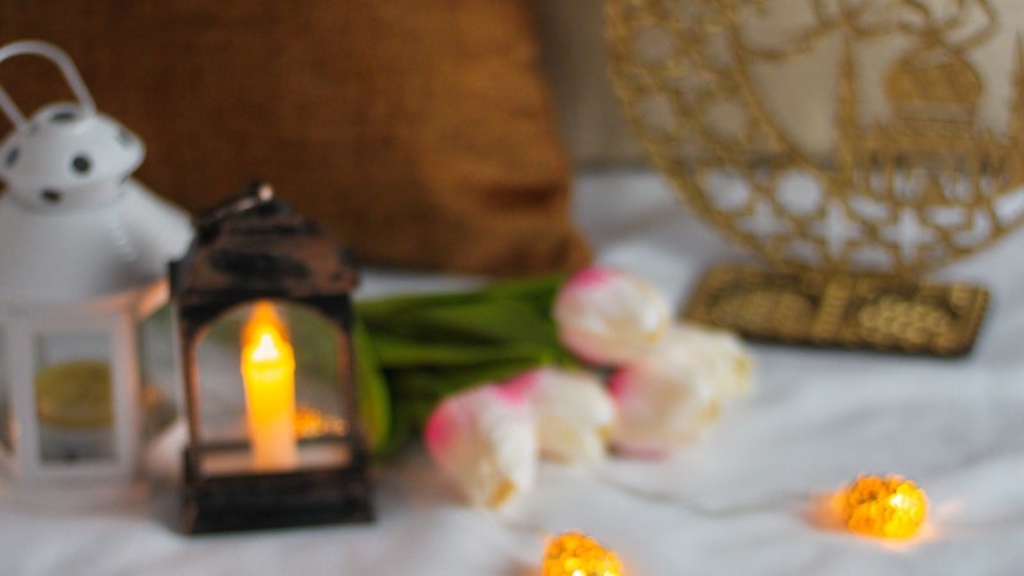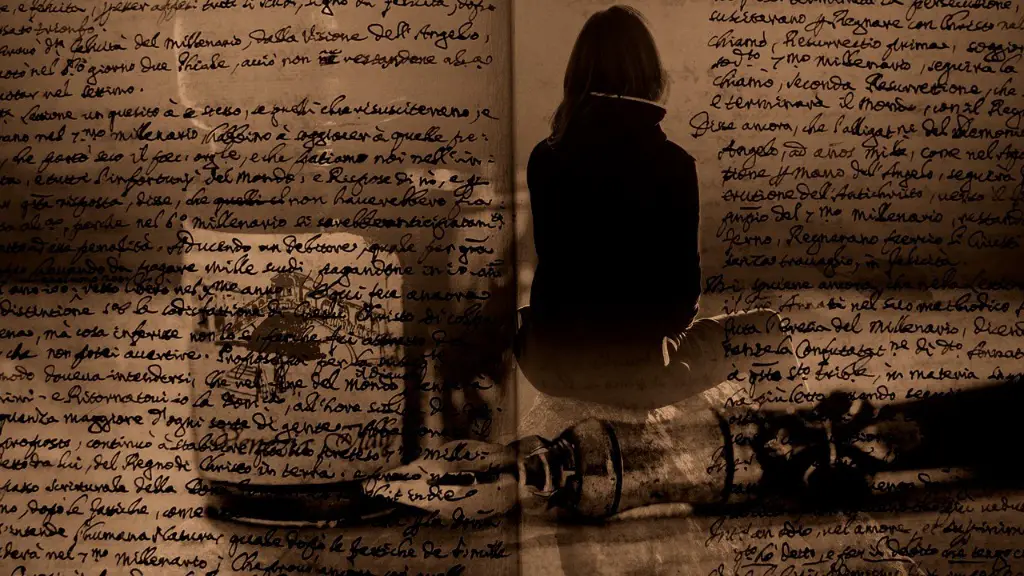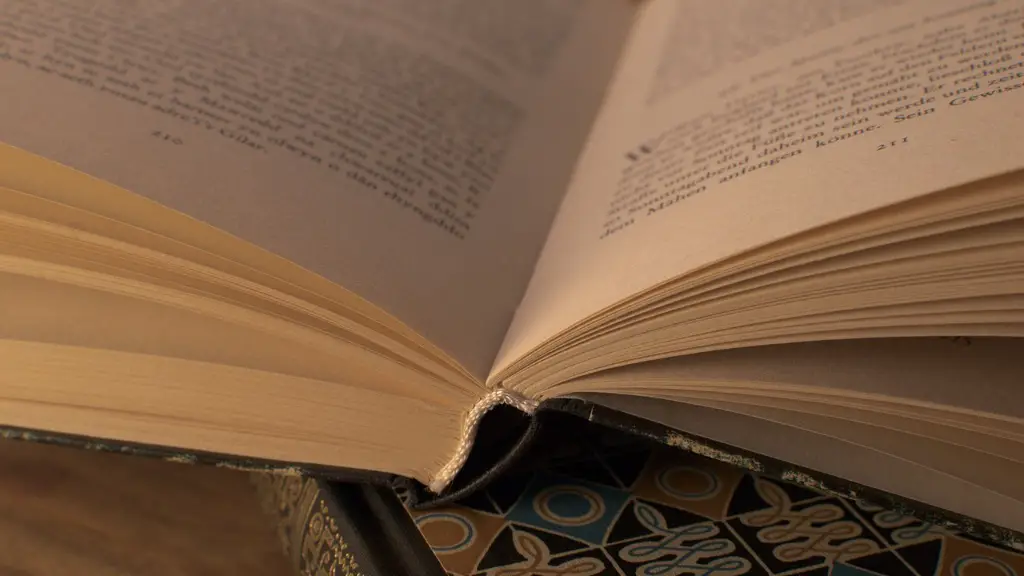Understanding Poetry
Poetry is an art form traditionally composed of meaningful language expressed in structured form. It can range from simple verse to elaborate ornamentation and complex forms of narration. Moreover, poetry as an art form is believed to have originated in ancient times as a way of communicating emotional or spiritual messages in a concise, elegant fashion. Today, poetry remains a widely respected form of expression, encompassing four distinct types that have evolved over time.
Sonnet
A sonnet is a poetic form that consists of 14 lines and utilizes a specific rhymical pattern. The majority of sonnets are written in iambic pentameter, with each line composed of 10 syllables in a specific pattern. While sonnets can cover any subject matter, many of them have a specific theme, ranging from love to death. In particular, the sonnet form is commonly used to communicate feelings of romantic love.
The sonnet first appeared in Italy in the 13th century, with authors such as Dante and Petrarch producing some the earliest works of this literary form. Several centuries later, William Shakespeare popularized sonnets with his works such as “Sonnet 18” and “Sonnet 116”. Since then, sonnets have been adapted and employed by various authors around the globe.
Free Verse Poetry
Free verse poetry is a form of expression lacking a strict rhyme or rhythm. Unlike sonnets and similar forms, free verse gives writers the freedom to create structured or unstructured works that can take on any form. Consequently, free verse poetry is an often-chosen form of expression by modern authors who wish to explore creative verbs, elaborate imagery, and complex meanings.
The use free verse dates back to 19th century, when English poets Percy Bysshe Shelley and William Wordsworth experimented with a novel form of expression that utilized new and creative techniques to evoke meaning. By the 20th century, free verse had evolved into the main type of poetry. Authors such as T.S Eliot, Walt Whitman, and Robert Frost used it to create works that pushed the boundaries of literary expression.
Haiku
Haikus are a form of poetry consisting of three lines. The first and last line consist of 5 syllables, while the middle line consists of 7 syllables. Haikus focus on the beauty of nature and are often known for their simplicity and directness. Moreover, haikus are frequently used to express a single moment or emotion that can be shared with the reader.
Haikus originated in Japan in the 17th century, popularized by poet Bashō. Japanese poets dedicated to this type of poetry eventually formed a poetry-writing group called the Haijin, and the popularity of haikus crossed over to western cultures in the 20th century. This type of poetry is now embraced by millions of people, taking a variety of shapes and serving different purposes.
Limerick
Limericks are short and often humorous poems consisting of five lines, with the first, second, and fifth lines containing three feet of three syllables each, and the third and fourth lines containing two feet with three syllables each. Limericks traditionally derive from humorous stories and often include rhymes and innuendos. Often considered a lighthearted type of poetry, limericks can still convey profound meaning in a few words.
Limericks have their origins in Irish folklore, where they were popularized in the 18th century by Edward Lear and other authors. Furthermore, many authors began writing limericks in the 19th century, and the tradition has continued to the present day. Now, limericks can be found in various works of literature, from poetry to theater.
Style Variations of the Four Types of Poetry
The four types of poetry can take on a variety of forms depending on the author’s style, culture, and personal preference. For example, sonnets can also be written in an alternate form known as the shakespearean sonnet, where the structure of the poem consists of three quatrains and a couplet. Similarly, haikus have been adapted globally, with poets writing 5–7–5 syllables in various languages. Free verse, on the other hand, lacks formal structure, leaving poets the freedom to be creative with narration and devices. Finally, limericks can be written with varying degrees of humor and cleverness, depending on the author.
Social Significance of Poetry
The four types of poetry have had a lasting effect in literary circles, often garnering social influence around the world. For instance, sonnets have connotations of romanticism and old-fashioned sentimentality often employed in popular culture. Efforts to revive the haiku as a form of protest have taken place around the globe. Meanwhile, free verse is widely seen as a defining factor of modern literature, reflecting the outlook of generations on a variety of topics. Finally, limericks have been used to draw attention to complex social issues in a humorous but powerful fashion.
Symbolic Representations of Poetry
The art of poetry is often compared to music and visual arts, offering writers the freedom to explore meaning through structure and creativity. Sonnets, for example, are often associated with harmony, as the rhyme and iambic pentameter often represent a balanced, musical approach to literature. Haikus are often known for their simplicity, resembling a single note of music or a still life painting. Free verse poetry is frequently viewed as an organic form of expression, free of the constraints imposed by structure and form. Meanwhile, limericks are viewed similarly to short-form comedies, evoking laughter and amusement.
The Use of Imagery in Poetry
The four forms of poetry are often characterized by their use of imagery. Sonnets typically utilize artistic descriptions to create vivid and inspiring images for the reader. Haikus bring an appreciation for the beauty of nature, which can be epitomized by powerful descriptions of scenery. Free verse poetry relies heavily on delicate word choices to evoke feeling and meaning from deep within the reader. Finally, limericks often use vivid metaphors and witty analogies to communicate complex ideas in humorous ways.
Flexibility of the Four Types of Poetry
The four types of poetry offer writers an impressive degree of flexibility with their utilization. Modern poets often experiment by combining traditional forms with more contemporary stylings. For example, sonnets often draw on everyday themes, while haikus become narrative vessels that can take the reader on a journey. Free verse poets often break the conventions of verse and rhythm to create new types of expression. Meanwhile, limericks have been adapted over time to become comedy pieces, while still maintaining the initial five-line structure.
Power of Language in Poetry
The four forms of poetry each rely heavily on the power of language. Poetry is an excellent example of how language can be used to influence emotion, create new worlds, or to demonstrate complex ideas with few words. Sonnets, for example, often use depth and the rhythm of language in tandem to create beautiful, heartfelt messages. Haikus prioritize understatement and directness, allowing authors to convey a full message in just a few words. Free verse typically uses unconventional word choice, often drawing on profound emotion for maximum impact. Finally, limericks rely on humorous language to draw attention to social issues in a candid way.
Continuing Relevance of Poetry
The four forms of poetry have remained relevant since their conception, and continue to influence academics, popular media, and literary works alike. Sonnets and haikus often paint an image of romanticism, while free verse and limericks are known for their ability to communicate complex ideas in a succinct manner. The widespread study and appreciation of poetry goes to show how powerful an art form it can be in conveying meaningful messages with just a few words.




